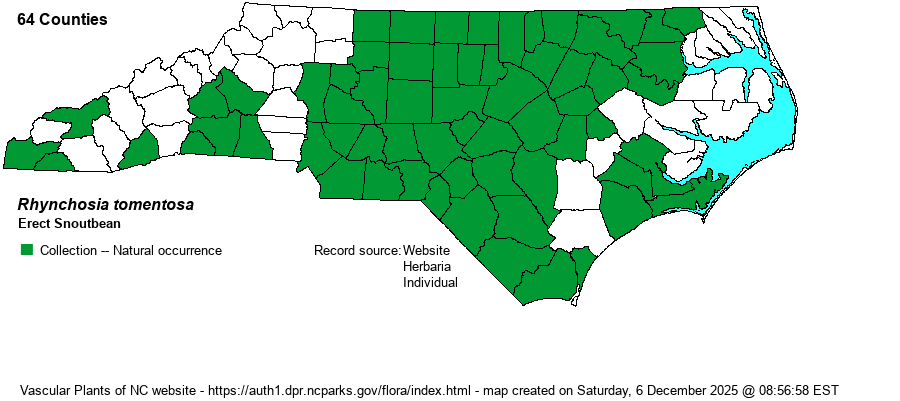| Author | (L.) Hooker & Arnott | |
| Distribution | Present throughout the eastern 2/3rds of the Piedmont and the western 2/3rds of the Coastal Plain, being scarce to absent only at the ends of the state. There are no records yet for the central and northern Mountains, nor in the eastern Coastal Plain (east of Gates, Martin, and Craven counties).
This is a Southeastern species, mostly avoiding the higher mountains. It ranges north to DE and MD and south to central FL and eastern TX, and then north to southern KY. | |
| Abundance | Common in the Sandhills region of the southwestern Coastal Plain; fairly common elsewhere in the western and central portion of the region, being most numerous in southern coastal counties, where locally common. Fairly common to frequent in the Piedmont portion of the range, except infrequent in the southwestern portions; likely has declined in the province owing to development and other loss of dry soil habitats. Uncommon in the southern mountains. This is clearly an S5 species (State Rank) in NC. | |
| Habitat | This is a dry soil species, favoring sandy soils in a number of settings. In the Coastal Plain it strongly favors Longleaf Pine (Pinus palustris) sandhills, in various communities, but especially pine/scrub oak sandhills. In the Piedmont it is found mainly in sandy or dry soil along wooded borders, clearings, openings in dry woods, and dry places in powerline clearings. | |
| Phenology | Blooms from June to August, and fruits from August to October. | |
| Identification | This species should be easily identified, even without flowers. It is an erect species and grows to about 1 foot tall, rarely to 1.5 feet. It has relatively few leaves and essentially no branches. The leaves are trifoliate, and each of the 3 leaflets is somewhat elliptical in shape, quite hairy, and strongly wrinkled with deeply sunken veins above; each is about 1.5-2 inches long and about half as wide. The flowers grow in very short clumps in leaf axils or at the end of the stem, yellow, and about 1/2-inch long. As with the other two native snoutbeans, the heavily wrinkled leaves with sunken veins should be enough for identification, and this is the only erect one with 3 leaflets. This is a species that should be seen fairly often in walks over most of the Piedmont and Coastal Plain, but seemingly easiest in well-managed natural areas in the Sandhills. | |
| Taxonomic Comments | None
| |
| Other Common Name(s) | Twining Snoutbean, Hairy Snoutbean. Most references use a misleading or simply "incorrect" common name, as this is not a twining species, but erect and not twining or climbing. Both Weakley (2018) and Sorrie (2011) use Erect Snoutbean, a good and quite descriptive name. NatureServe uses Hairy Snoutbean, probably as "tomentosa" means "tomentose = hairy". This website prefers to go against the majority and use the least confusing name of Erect Snoutbean, particularly as Sorrie is one of the website editors. | |
| State Rank | S4 [S5] | |
| Global Rank | G5 | |
| State Status | | |
| US Status | | |
| USACE-agcp | | |
| USACE-emp | | |

